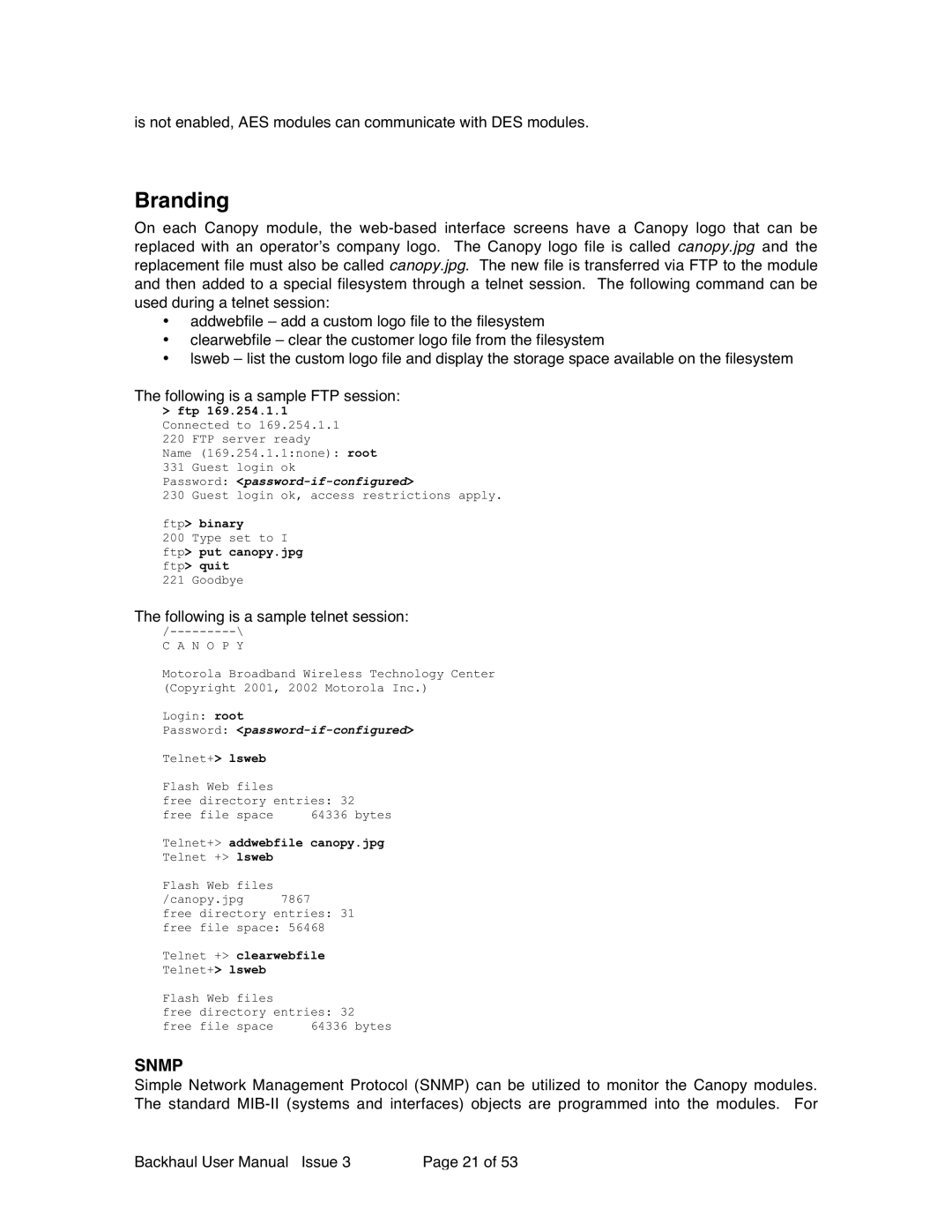is not enabled, AES modules can communicate with DES modules.
Branding
On each Canopy module, the
•addwebfile – add a custom logo file to the filesystem
•clearwebfile – clear the customer logo file from the filesystem
•lsweb – list the custom logo file and display the storage space available on the filesystem
The following is a sample FTP session:
>ftp 169.254.1.1 Connected to 169.254.1.1 220 FTP server ready
Name (169.254.1.1:none): root 331 Guest login ok
Password: <password-if-configured>
230 Guest login ok, access restrictions apply.
ftp> binary
200 Type set to I
ftp> put canopy.jpg ftp> quit
221 Goodbye
The following is a sample telnet session:
/ | |
C | A N O P Y |
Motorola Broadband Wireless Technology Center
(Copyright 2001, 2002 Motorola Inc.)
Login: root
Password:
Telnet+> lsweb
Flash Web | files |
| |
free | directory entries: 32 | ||
free | file | space | 64336 bytes |
Telnet+> addwebfile canopy.jpg
Telnet +> lsweb
Flash Web files
/canopy.jpg 7867
free directory entries: 31
free file space: 56468
Telnet +> clearwebfile
Telnet+> lsweb
Flash Web | files |
| |
free | directory entries: 32 | ||
free | file | space | 64336 bytes |
SNMP
Simple Network Management Protocol (SNMP) can be utilized to monitor the Canopy modules. The standard
Backhaul User Manual Issue 3 | Page 21 of 53 |
